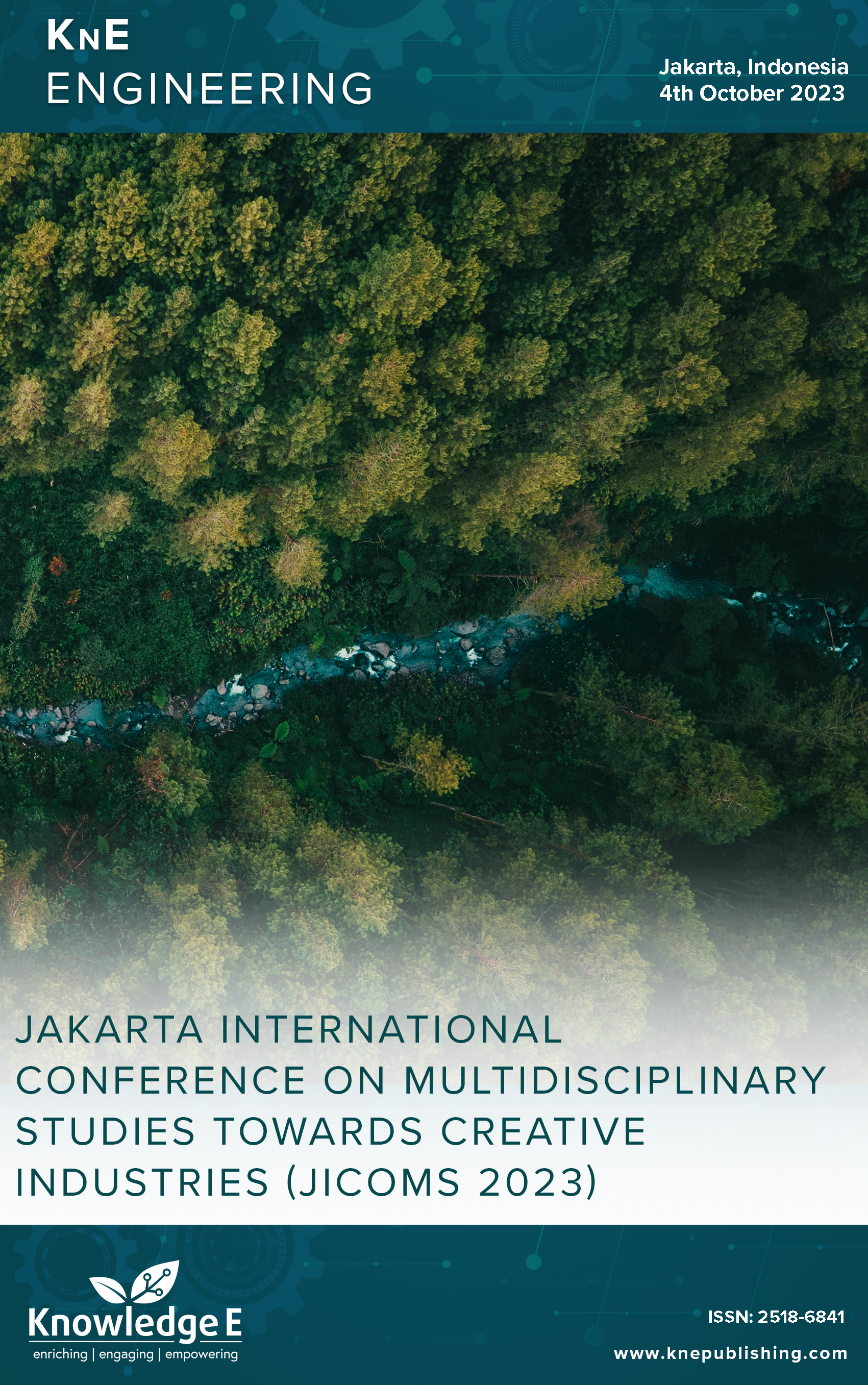Utilization of Palm Oil Waste into Liquid Smoke in Cellulose Commercial Starch Nano Fiber Composite as Antimicrobial Substances in the Manufacturing of Food Packaging
DOI:
https://doi.org/10.18502/keg.v6i1.15382Abstract
The high demand for plastic use today will result in environmental damage because the plastic that is widely used cannot be broken down. This plastic waste is dangerous for the sustainability of the food chain, pollutes water and soil, causes global warming, and causes air pollution. This research synthesizes a cellulose nanofiber composite with commercial starch in a 1:1 ratio with the influence of the addition of smoke liquid from palm oil waste. This research aims to process cellulose nanocomposite fibers combined with commercial starch and use them in biodegradable plastic by testing the effect of giving smoke liquid on the development of microbial substances in environmentally friendly biodegradable plastic food packaging. So the resulting product is expected to have the potential to reduce dependence on the use of synthetic plastic. This research aims to determine the optimum concentration of liquid acid from empty oil palm fruit bunches as an antimicrobial agent in the resulting bioplastic. The addition of liquid smoke changes the bioplastic properties of FTIR and XRD the attractive strength of bioplastic. The sample with the highest concentration of liquid smoke had the greatest tensile strength (2.34 MPa). The addition of liquid smoke concentration from empty oil palm shells showed a good inhibitory area for the development of bacillus cereus (10.8 mm).
Keywords: liquid smoke, plastic biodegradable, food packaging, antimicrobial
References
[2] Shafqat A, Al-Zaqri N, Tahir A, Alsalme A. Synthesis and characterization of starch based bioplatics using varying plant-based ingredients, plasticizers and natural fillers. Saudi J Biol Sci. 2021 Mar;28(3):1739–49.
[3] E. Siregar, Y. Sinambela, and K. Anwar, “Characterization Of Cellulose Nano Fiber From Solid Waste Of Palm Oil Palm Empty Fruits As Basic Materials Of Bioplastic For Food Packaging,” 2022, https://doi.org/10.4108/eai.16-11-2022.2326060..
[4] Otoni CG, Azeredo HM, Mattos BD, Beaumont M, Correa DS, Rojas OJ. The Food- Materials Nexus: Next Generation Bioplastics and Advanced Materials from Agri- Food Residues. Adv Mater. 2021 Oct;33(43):e2102520.
[5] Liwarska-Bizukojc E. Effect of (bio)plastics on soil environment: A review. Sci Total Environ. 2021 Nov;795:148889.
[6] El-Refai AA, Ghoniem GA, El-Khateeb AY, Hassaan MM. Eco-friendly synthesis of metal nanoparticles using ginger and garlic extracts as biocompatible novel antioxidant and antimicrobial agents. J Nanostructure Chem. 2018;8(1):71–81.
[7] efrizal siregar, parningotan simamora, and Y. Sinambela, “Characterization Of Organic Ink From Hydrochar-Based Cellulose Synthesis Of Durian Skin Waste Reinforced By Acasia Substance As Printing Ink Printing,” pp. 1–7, 2022, https://doi.org/10.4108/eai.16-11-2022.2326061..
[8] Ni’mah L, Setiawan MF, Prabowo SP; L. Ni’Mah. M. F. Setiawan, and S. P. Prabowo, “Utilization of Waste Palm Kernel Shells and Empty Palm Oil Bunches as Raw Material Production of Liquid Smoke,”. IOP Conf Ser Earth Environ Sci. 2019;366(1):012032.
[9] Lisa Ginayati M. Faisal, and Suhendrayatna, “Pemanfaatan Asap Cair Dari Pirolisis Cangkang Kelapa Sawit Sebagai Pengawet Alami Tahu,”. J. Tek. Kim. USU. 2015;4(3):7–11.
[10] Jancy R. S., Shruthy, R., Preetha, “Fabrication of packaging film reinforced with cellulose nanoparticles synthesized from jackfruit non-edible part using response surface methodology.,”. Int J Biol Macromol. 2020;14:263–72.
[11] Moohan E. J., Stewart, S.A., Espinosa, E., Rosal, A., Rodríguez, A., Larra˜neta, “Cellulose nanofibers and other biopolymers for biomedical applications,” A Rev. Appl. Sc. 2020;10:65.
[12] Hong LG, Yuhana NY, Zawawi EZ. Review of bioplastics as food packaging materials. AIMS Mater Sci. 2021;8(2):166–84.
[13] Zhao X, Cornish K, Vodovotz Y. Narrowing the Gap for Bioplastic Use in Food Packaging: an Update. Environ Sci Technol. 2020 Apr;54(8):4712–32.
[14] Arun R, Shruthy R, Preetha R, Sreejit V. Biodegradable nano composite reinforced with cellulose nano fiber from coconut industry waste for replacing synthetic plastic food packaging. Chemosphere. 2022 Mar;291(Pt 1 no. P1):132786.
[15] Gea S, Zulfahmi Z, Yunus D, Andriayani A, Hutapea YA. The Isolation of Nanofibre Cellulose from Oil Palm Empty Fruit Bunch Via Steam Explosion and Hydrolysis with HCl 10%. J Phys Conf Ser. 2018;979(1):012063.
[16] Gea S, Panindia N, Piliang AF, Sembiring A, Hutapea YA. All-cellulose composite isolated from oil palm empty fruit bunch. J Phys Conf Ser. 2018;1116(4):042013.
[17] Gea S, Pasaribu KM, Sarumaha AA, Rahayu S. Cassava starch/bacterial cellulose-based bioplastics with Zanthoxylum acanthopodium. Biodiversitas (Surak). 2022;23(5):2601–8.
[18] B. Syam, M. Muttaqin, Mawardi, F. Rozi, Martgomi, and J. Hutagalung, “The application of empty fruit bunch (EFB) fibers of oil palm for the development of light structure materials and products,” E3S Web Conf., vol. 52, pp. 1–8, 2018, https://doi.org/10.1051/e3sconf/20185200007..


